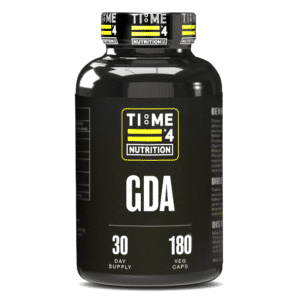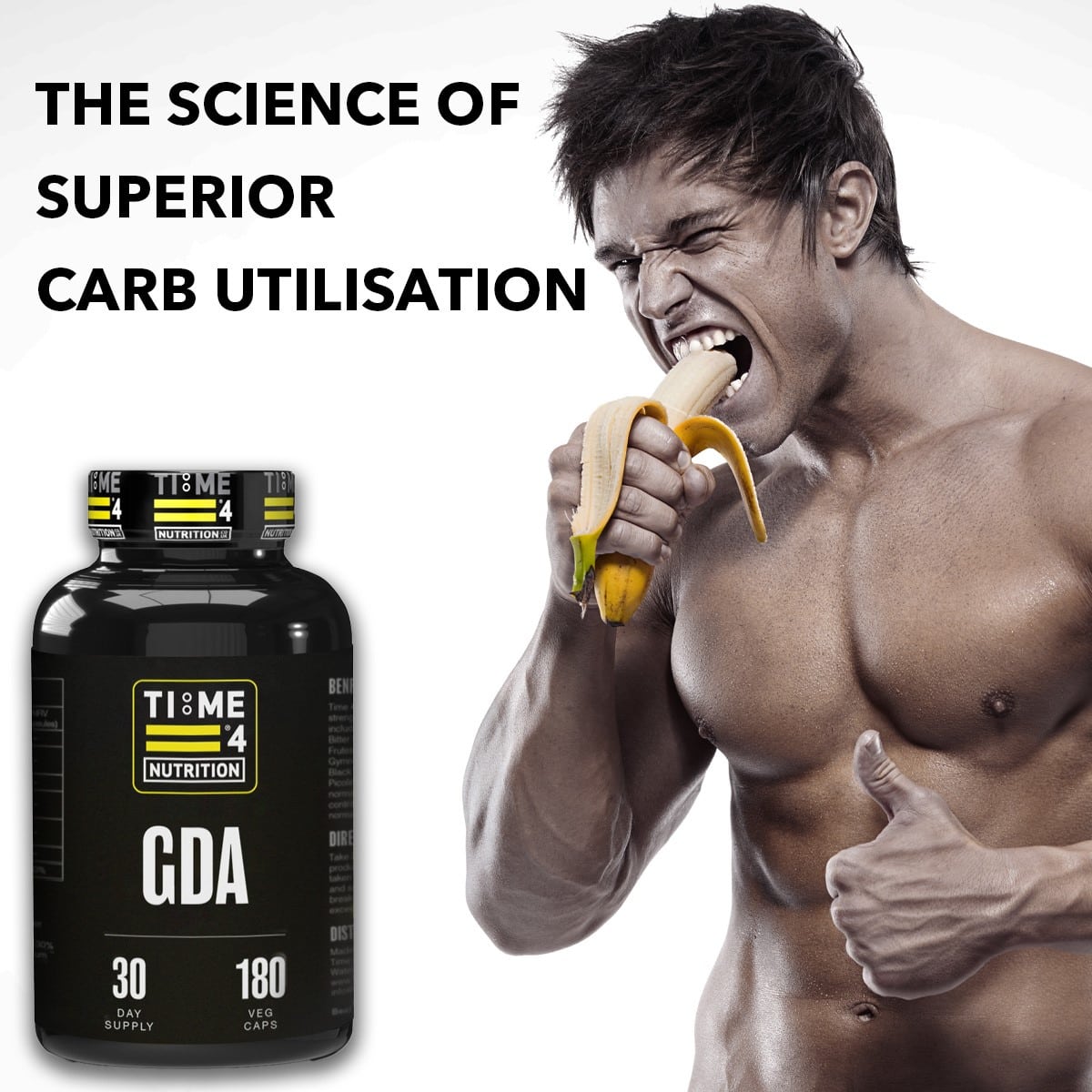Time 4 GDA – Glucose Disposal Agent Ingredient Profile By Brian Batcheldor BSC
Time 4 GDA – Glucose Disposal Aid: Ingredient Profile
Lets take a deep dive into each ingredient in our Time 4 GDA – Glucose Disposal Aid.
Berberine HCI
Berberine, an isoquinoline alkaloid derived from plants of the generis Berberis, has been recognized as being capable of decreasing oxidative stress, LDL (bad) cholesterol , triglycerides, and insulin resistance and of improving the mood. Several studies have compared Berberine with the frontline type 2 diabetes medication, metformin. Mg for mg, Berberine exhibited exactly the same effects as metformin on blood glucose, but with additive anti-obesity and anti-inflammatory properties. The potent anti-diabetic properties have been established to be partly elicited through improved function of beta-cells; prompting insulin secretion and islets regeneration, lowering lipid levels and regulating glucose and lipid metabolism by influence transcriptional factors expression such as PPAR gamma, C/EBP alpha, SREBP-1c, LXR. Indirectly, the effects will also occur through Berberine’s anti-oxidant properties, the ability to inhibit reductase and thus repress oxidative stress and also the regulation of metabolic signalling pathways, e.g. the cyclic adenosine monophosphate signalling pathway.
Kalahari Bitter Melon Extract
The seeds of this traditional Southern African anti-diabetic medicine are particularly high in plant proteins. These anti-hyperglycaemic globulins cause a significant drop in blood sugar after ingestion. Of particular note, supplementation with this watermelon seed extract reduces total cholesterol and LDL (bad) cholesterol in adults with dyslipidemia under the influence of the MTHFR C677T polymorphism, an increasingly common genetic condition which affects folate metabolism with a disastrous impact on vascular health.
Sutherlandia Frutescens
This South African medicinal plant has an extensive history in the treatment of type 2 diabetes amongst indigenous peoples. Sutherlandia Frutescens has not only been shown to fully prevent type 2 diabetes in subjects normally susceptible to it, 8 weeks of supplementation with a standardized aqueous extract by pre diabetic subjects has been demonstrated to normalize insulin levels and glucose uptake in peripheral tissues whilst suppressing intestinal glucose uptake, with no weight gain! In normal subjects, it consistently demonstrates significant glucose uptake into muscle tissue and the ability to blunt gluconeogenesis, thus sparing muscle during a low carb diet! This is indeed a complex and powerful natural tool to promote glycogen supercompensation and easier management of body fat levels; whilst studies have identified the VAMP3 gene, which plays a role in vesicle transport, to be up-regulated by Sutherlandia Frutescens, an astonishing 26 other genes, encoding vesicle transporters, receptors, signalling molecules, transcription factors, and metabolic enzymes, have also shown significant upregulation by Sutherlandia Frutescens!
Cinnamon Extract
In its various forms, Cinnamon has long been marketed around the world as a treatment for obesity, diabetes and dyslipidaemia. Several successive meta analyses have now shown this to not be without good reason. Insulin receptor auto-phosphorlylation and de-phosphorylation, glucose transporter 4 (GLUT-4) receptor synthesis and translocation, modulation of hepatic glucose metabolism through changes in Pyruvate kinase (PK) and Phosphenol Pyruvate Carboxikinase (PEPCK), altering the expression of PPAR (γ) and inhibition of intestinal glucosidases are among the identified mechanisms responsible for improving glycaemic control with cinnamon therapy.
Gymnema Sylvestre
Various extracts of Gymnema Sylvestre (GS) have established anti diabetic activities and have been used as a folk medicine in India for centuries. Several studies on both humans and animals have demonstrated the ability to suppress weight gain on high fat diets and to lower serum levels of lipids, insulin and leptin, whilst decreasing adipose tissue (body fat) and liver inflammation (fatty liver stress). An effective Glucose Disposal Agent and powerful tool in treating metabolic disorder, GS imparts most of its known effects through the properties of its triterpenoidic saponins, primarily gymnemosides a, b, c, d, e, and f along with nine known triterpene glycosides. The mechanisms by which Gymnemic acids impact the serum glucose level include enhanced expression of GLUT-4, adiponectin and PPAR alpha.
Piperine
Poor bioavailability and/or rapid metabolism is generally considered a major obstacle in translating the implied effects of many natural compounds in humans, including most in this formula. Therefore, the addition of Piperine as a bioenhancer is a natural conclusion, as it is clinically proven to enhance the pharmacokinetic parameters of compounds like saponins and flavonoids by enhancing intestinal permeability and inhibiting their glucuronidation, thus slowing elimination. In fact, one study actually specifically found a significantly better effect from the combination of piperine with a therapeutic dose of metformin (see Berberine above) in comparison to metformin alone. Piperine in combination with a sub therapeutic dose of metformin also showed better effect than a therapeutic dose of metformin alone. However, Piperine also plays a bit of a starring role itself as a GDA, as studies demonstrate that Piperine supplementation alone promotes beneficial metabolism in skeletal muscle during exercise by regulating carbohydrate/fat metabolism and redox signs.
Chromium Picolinate
Chromium is an essential element that the body requires in trace amounts and is part of a molecule called chromodulin, which helps the hormone insulin perform its actions in the body. Chromium picolinate comprises the mineral chromium attached to three molecules of picolinic acid. Chromium supplementation has long been known to have a therapeutic value in the management of cholesterolemia and hyperglycemia in subjects with diabetes. A meta analysis showed that all 15 studies yielded beneficial effects in at least one parameter of diabetes management, including dyslipidemia, which equate to a reduced risk for disease complications. Other Positive outcomes have included decreased blood glucose and insulin and reduced requirements for hypoglycaemic medication.
Time 4 GDA – Best Glucose Disposal Aid.

